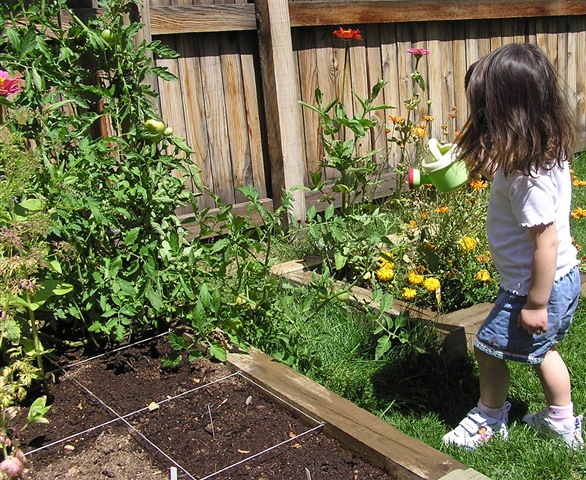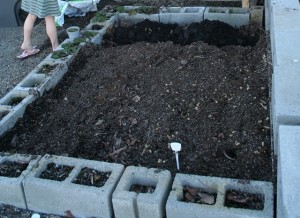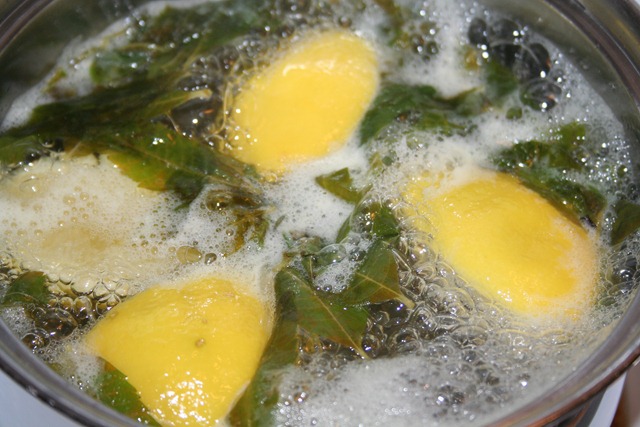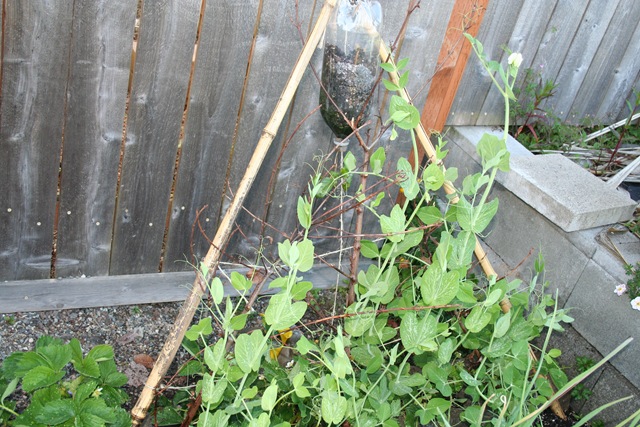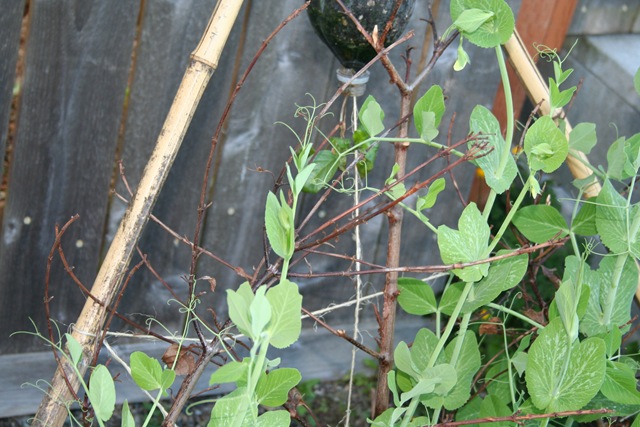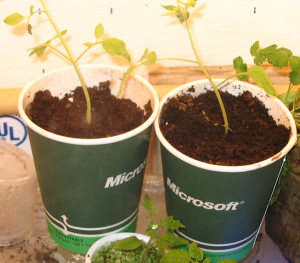How to save spinach seeds from your garden
14.8 years ago harvest, seed saving, spinach
Growing up in rural Washington state, the job market was a somewhat lacking for those under the age of 16. Given this at the age of 14-15 I was sucked into the attractive and lucrative career of spinach rouging, also known as “The Worst Summer Camp Ever” The basic premise of the job was to walk down endless “female rows” in the hot sun and destroying any male spinach plants. For every 12 “female rows” there were 4 “male rows” of higher quality spinach plants which were desired for pollination. So in other words I was facilitating the hybridization of spinach plants.
Hoping to keep these memories behind me when I decided to grow spinach seeds this year, I realized I actually learned something which I thought I would share. In my case I am open pollinating so no rouging required though it is good to still know how to identify the boys and the girls since no matter how hard you try those boys will not be creating any seeds.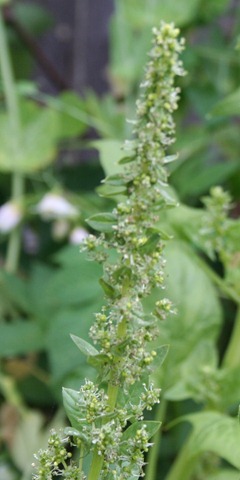
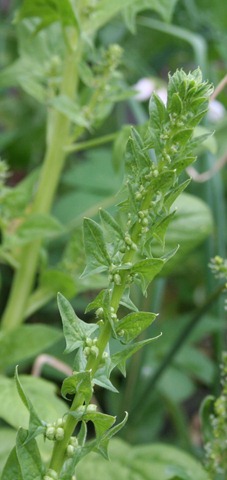
The plant on the left is a male plant, you can identify it by the little yellow balls under the leaves. As you may have guessed the one on the right is a female plant which only have green balls under the leaves. Not to over complicate things there is also monacious plants which are basically both male and female which I would normally just pull up since it will make things easier during harvest time.
Spinach seeds for the most part will wind pollinate on their own but if you garden is somewhat protected from winds it may be helpful to flick the male plants every week or so to help out the process.
Once the plants turn yellow go ahead and pull them up. If they are males throw them in the compost. If they are females hang them in a dark dry place. I chose to hang mine off my mountain bike’s brake cable.
After a few weeks of drying you should see the seeds brown and dry just like they came out of the package you planted them with. Store the seeds in a dry cool place (jar in refrigerator) and you should have a great stock of seeds for the next year.
Tags: compost, garden seeds, outdoor plants
How to build a raised vegetable garden
14.9 years ago garden planning, raised garden
Building a raised vegetable garden is a very easy and with the right planning can also be very inexpensive. First you need to answer a few important questions before you get started.
The first you have to pick a location. There are a few things to keep in mind when choosing the location; sun, water, convenience, and competition for nutrients.
SUN – You want to pick a location where the plants will get adequate sun for success. If this is an area where you will be growing summer vegetable a southern facing location should be used. For other cooler crops East/West facing should suffice.
WATER – You want a place that is convenient to water your plants. If you have to unravel/coil up 200 feet of hose every time you water you most likely will begin to have under watered plants during the summer months. If a hose is not really even an option the method of filling a couple five gallon buckets and bringing them to your garden is great exercise.
CONVENIENCE — The more often you walk by your garden the more likely you will not forget about (or neglect it) If it happens to pass it on your trip from my car to your back door you most likely will notice suffering plants or potential additions for tonight’s dinner to harvest.
COMPETITION FOR NUTRIENTS — Make sure your garden is not too close to other planting such as established plants or trees. This will force both sets of plants roots to compete for water and nutrients where both may end up coming up short.
Now you know where to build your garden next is to determine the best materials to build you garden out of. Personally I like cinder blocks since they never have to be replaced, relatively inexpensive, have ability to hold solar energy and as an added bonus have great little holes to grow strawberries in. Now on the negative side I will be the first to admit they are not the prettiest thing to look at and don’t really make the most comfortable bench to sit on.
Below I have included some of the pro and cons of various building materials.
| Building Material | Cost per linear foot | Tools required | Pros | Cons |
| Cinder Blocks | $0.97 | None (other big muscles) | Extra plating area in holes | Hard to sit on, not as aesthetically pleasing |
| Chiseled Wall blocks (2 high) |
$5.96 | None (other big muscles) | Most aesthetically pleasing | Expensive |
| Bricks (3 high) |
$1.36 | None (if dry stacked) | More aesthetically pleasing than cinder blocks | Expensive, and mortar may be required depending on height |
| Wood — Cedar (.75” X 8”) |
$1.60 | Drill (screws) | Looks good, natural appearance | Wood is organic so eventually will decompose. Some assembly required |
Third step is actual construction of your raised garden bed. I agree with Mel Bartholomew’s recommendation (from Square Foot Gardening fame)where he suggests limiting the width of the garden bed to no greater that 4 feet. This allows for easy watering, weeding, and harvesting of your vegetables without any serious reaching. This also works out good since lumber normally comes in 8 or 12 foot increments so very limited waste.
For all methods I recommend digging about 2 inches around your perimeter of your planned raised garden bed. This first will give you a visual idea of your new space but also give the blocks/bricks/wood a good foundation to prevent slipping. Speaking of foundation the weight of block/bricks is enough to keep the dirt in place, though with wood I would recommend creating a 4 foot 1X1 as a cross support every 4 feet to help spread out some of the load as you add soil.
Finally it is time to fill your your garden bed with some great soil. If you happen to be luck enough to have this in your backyard go ahead and fill it up. For the rest of us this is a great time to start your garden off to a good start. I recommend a recipe of three main parts (compost, filler, and “fluff”) of equal quantities. Compost should be self explanatory, great organic material thriving with life. For filler I recommend materials like coconut coir, peat moss, or even some good topsoil. For “fluff” add a material such as perlite or vermiculite to add some moisture retention and some great aeration for your plants roots.
Now all my recommendations above all mention a height of less than 12 inches. There are some good reasons for this given there are not too many vegetables you can’t grow in less than six inches of good quality soil. Assuming you are lucky like me and have an abundance of clay in your backyard this means significantly less soil to purchase when filling. Now this is harder on the back bending over so for someone with limited mobility you can bring up the garden bed to a more comfortable height though there really is no reason to fill the garden bed with 2-3 feet of soil. This is an area to be creative, maybe some free fill dirt for the first couple feet, aluminum cans, anything that can take up space and not use your precious garden soil.
Now if your selection of tools are limited or you just want to get some beds up quickly to start growing some vegetables, there are a many commercial raised garden kits out there.
Tags: compost, led, organic vegetables, outdoor plants, raised garden, strawberry plants, vegetables
Lemon Verbena Lemonade Recipe
14.9 years ago lemon verbena, recipe
I am moving into a new office this week so I had to bring a couple of my lemon verbena plants home and given the great weather we were having I decided to move them right back into the garden. Fortunately they were a little leggy from lack of sunlight in my office so I cut off some of the dropping stems and was about to put them in the compost until I got the idea to make some Lemon Verbena Lemonade.
The basic idea is the same as regular lemonade though you add Lemon Verbena leafs and use fewer lemons. It has been said that lemon verbena can have calming effects and can reduce stress; sounds like a great summer drink to me.
Lemon Verbena Lemonade
- 24 Lemon Verbena Leaves
- 2 lemons
- Sugar (or artificial sweetener)
- Water
- Peppermint sprig (optional)
Directions: Squeeze lemon juice lemons into a small pot. Add Lemon remains, Lemon Verbena leaves, 2 cups of sugar, and approximately 4 cups of water to pot. Bring to boil and let boil for 4 minutes. Strain mixture into 1-2 gallon container and fill with water. Add more sugar to taste (kids like the stuff tasting like Kool-Aid though I would recommend less sugar) Add ice and enjoy on hot summer day. Given Max and Ruby’s grandma “secret ingredient” to lemonade is peppermint we can’t make any lemonade without it so this part is completely optional.
Tags: compost, outdoor plants, pepper plants, peppermint plant
How to make a cheap pea trellis
15 years ago cheap, peas, trellis
This is really two trellises in one. I started by taking a couple bamboo stakes (reused from a couple of one season too long Halloween scarecrows) and bound them together at the top using some twine. I then put the ends in the corners of my garden leaning against the cinder blocks surrounding my raised garden. I following this by adding some twine up the trellis to allow the peas to climb up.
Thing started to get a little crowded so I browed a tip from Martha Stewart, now she recommends black birch branches, but I decided to go with the dead bush I had in my back yard. I was already chopping it up to compost so saved some of the larger branches, stabbed them in the ground and ala pea trellis.
Though the two part trellis was more of an accident, in many ways I really like the support of the bamboo along with the abstract reach of the branches.
Tags: cheap, compost, raised garden
Finish outdoor seed planting with coffee grounds
15.2 years ago garlic bulbs, onions, outdoor seed starting
It has been a blessing that the competition for free coffee grounds at the Starbucks at my work has increased now the weather warmed up and I have freed from the temptation to grab yet another free shiny silver bag of grounds. The reason is, I have put four bags in my compost, worked generous amounts into my vegetable garden and I still have six bags left. Now I am looking at inventive ways to use the rest up. I tried mixing with perlite to make a cheap potting soil (failed still no room for roots) but I believe I have come across one success I thought I would share.
When you are finished planting seeds outdoors apply a thin layer of coffee grounds. This will deter slugs from going after your new seedlings and keep cats from mistaking your nicely loosened and raked soil for their kitty litter.
I have done this for my larger seed plants (peas, garlic, onions, cilantro) but for the small seed plants (carrots, lettuce, spinach) I used the coffee grounds as a seed covering.
So far the results are great. All of my peas/garlic/onions/spinach have sprouted with no signs of pests (four-legged nor zero-legged).
Tags: cheap, cilantro, coffee grounds, compost, garden seeds, garlic bulbs, led, outdoor plants, vegetables
Growing seedlings with compostable coffee cups
15.2 years ago cheap, compost, indoor seed starting, tomato
Occasionally at work I get a craving for some hot chocolate. When I do, I reach for a company provided compostable coffee cup (I know I should bring in my own cup, but I did say “occasionally”). When I am done with my delicious beverage, I simply dispose of them in the proper “compostable” reciprocal. Last week was different, with my recent frustration with the durability of some of my newspaper pots, I got the idea to extend the life of these cups a little longer and grow some seedlings in them.
This particular type of cup breaks down in 47 days, unless you happen to leave one half filled with liquid overnight on your desk, in that case they magically breaks down a few minutes after you walk out the door. I am planning on growing my tomatoes and peppers in these cups and plant them directly into the soil. To help with more freedom in root growth I will cut out the bottom of the cup. I will let you know how it works.
Now if your work does not use these cups, never fear many coffee shops are featuring these same type of cups with the purchase of an overpriced hot beverage.
Tags: cheap, coffee grounds, compost, garden seeds, led, outdoor plants, pepper plants, tomato plants, vegetables

